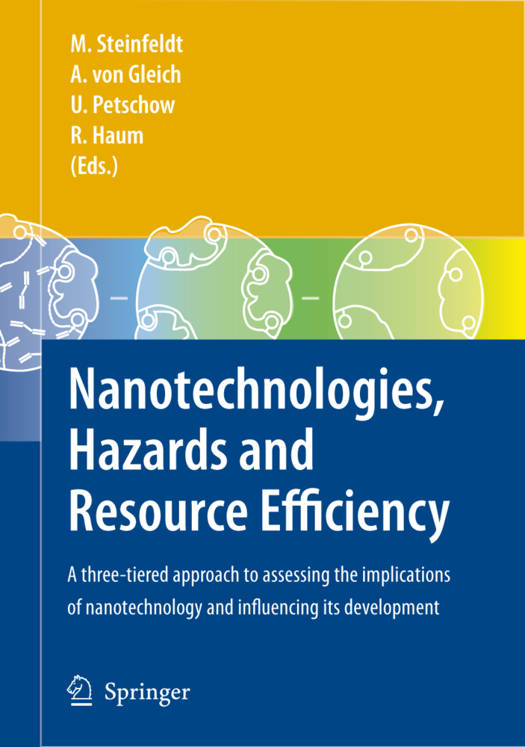
Je cadeautjes zeker op tijd in huis hebben voor de feestdagen? Kom langs in onze winkels en vind het perfecte geschenk!
- Afhalen na 1 uur in een winkel met voorraad
- Gratis thuislevering in België vanaf € 30
- Ruim aanbod met 7 miljoen producten
Je cadeautjes zeker op tijd in huis hebben voor de feestdagen? Kom langs in onze winkels en vind het perfecte geschenk!
- Afhalen na 1 uur in een winkel met voorraad
- Gratis thuislevering in België vanaf € 30
- Ruim aanbod met 7 miljoen producten
Zoeken
Nanotechnologies, Hazards and Resource Efficiency
A Three-Tiered Approach to Assessing the Implications of Nanotechnology and Influencing Its Development
Michael Steinfeldt, Arnim Gleich, Ulrich Petschow, Rüdiger Haum
Paperback | Engels
€ 167,95
+ 335 punten
Uitvoering
Omschrijving
Nanotechnology is frequently described as an enabling technology and 1 fundamental innovation, i.e. it is expected to lead to numerous innovative developments in the most diverse fields of technology and areas of app- cation in society and the marketplace. The technology, it is believed, has the potential for far-reaching changes that will eventually affect all areas of life. Such changes will doubtlessly have strong repercussions for society and the environment and bring with them not only the desired and intended effects such as innovations in the form of improvements to products, pr- esses and materials; economic growth; new jobs for skilled workers; relief for the environment; and further steps toward sustainable business, but also unexpected and undesirable side effects and consequences. With respect to the time spans in which nanotechnology's full potential 2 will presumably unfold, M. C. Roco (2002:5) identified the following stages or generations for industrial prototypes and their commercial expl- tation: Past and present: The "coincidental" use of nanotechnology. Carbon black, for example, has been in use for centuries; more specific, isolated applications (catalysts, composites, etc.) have been in use since the early nineties. First generation: Passive nanostructures (ca. 2001). Application p- ticularly in the areas of coatings, nanoparticles, bulk materials (nan- tructured metals, polymers, and ceramics). Second generation: Active nanostructures (ca. 2005). Fields of appli- tion: particularly in transistors, reinforcing agents, adaptive structures, etc.
Specificaties
Betrokkenen
- Auteur(s):
- Uitgeverij:
Inhoud
- Aantal bladzijden:
- 271
- Taal:
- Engels
Eigenschappen
- Productcode (EAN):
- 9783642093128
- Verschijningsdatum:
- 19/10/2010
- Uitvoering:
- Paperback
- Formaat:
- Trade paperback (VS)
- Afmetingen:
- 156 mm x 234 mm
- Gewicht:
- 408 g

Alleen bij Standaard Boekhandel
+ 335 punten op je klantenkaart van Standaard Boekhandel
Beoordelingen
We publiceren alleen reviews die voldoen aan de voorwaarden voor reviews. Bekijk onze voorwaarden voor reviews.









